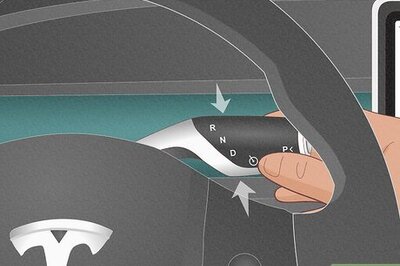
views
SHARM EL-SHEIKH, Egypt: The United States will help the United Arab Emirates replenish interceptors it uses to knock down incoming missiles following a spate of unprecedented attacks by Houthi fighters in Yemen, the U.S. general overseeing Middle East operations told Reuters.
In recent weeks, the Iran-aligned Houthis have waged a string of largely failed strikes on UAE targets that have triggered Emirati and U.S. air defenses and have even seen American troops based there briefly taking shelter.
“We will help with replenishment of interceptors. And we’ll do everything we can to assist UAE in defending themselves,” General Frank McKenzie, head of U.S. Central Command, said in an interview after a trip to Abu Dhabi earlier this week.
McKenzie did not offer further specifics. The UAE has privately requested U.S. replenishment of missile defense interceptors, including for its THAAD and Patriot system, a source familiar with the matter said, speaking on condition of anonymity.
The latest U.S. move would be in addition to the Pentagon’s announcement last week of a deployment of a guided missile destroyer and advanced U.S. F-22 fighter jets to the UAE. It would also stick closely to defensive support, amid stiff opposition to the war in Yemen among many lawmakers in Congress due to civilian deaths.
The conflict has killed tens of thousands of people and caused a humanitarian crisis.
The Houthi attacks have thrown a spotlight on so-far unsuccessful U.N.-led efforts to broker an end to the war in Yemen, which since 2015 has pitted the Houthis against a Saudi Arabian-led military coalition that includes the UAE.
McKenzie, who has also expressed concern about Houthi attacks against ally Saudi Arabia, acknowledged that the United States has been grappling with significant limits on U.S. surveillance capability over Yemen, noting its size.
“We’re very limited in ISR over Yemen. It’s hard to see into Yemen,” McKenzie said, using an acronym for military intelligence, surveillance and reconnaissance capabilities, which include drones.
“It’s a large country, and you have to make decisions on priorities.”
Experts say it can be difficult to help allies detect and destroy Houthi launch sites without adequate ISR, particularly when dealing with mobile missile launchers.
Aware of their value, Houthis target U.S. drones. The Houthis have shot down two U.S.-operated drones since McKenzie took command in March 2019 and far more drones operated by regional allies.
With tensions simmering around the world, from North Korea to Ukraine, the Pentagon has to deal with competing priorities for ISR resources, which also include satellite imagery.
“I communicate with partners where we are with Yemen. I communicate with our (U.S. defense) secretary all the time about the resources that we need,” McKenzie said, without identifying any specific request.
“So it’s an informed dialogue that goes on within the department of defense.”
McKenzie declined to speculate whether the Pentagon might dedicate additional ISR to Yemen, saying: “Anything is possible.”
Although it has long targeted Saudi Arabia, the Houthi movement last month responded to battlefield losses with the unprecedented assaults on UAE, sources say.
The conflict https://www.reuters.com/world/middle-east/fighting-eases-yemens-marib-saudi-led-coalition-revamps-forces-2022-02-08 is largely seen as a proxy war between Saudi Arabia and Iran, which the United States accuses of arming the Houthis. The Houthis say they are fighting a corrupt system and foreign aggression.
Disclaimer: This post has been auto-published from an agency feed without any modifications to the text and has not been reviewed by an editor
Read all the Latest Politics News here




















Comments
0 comment